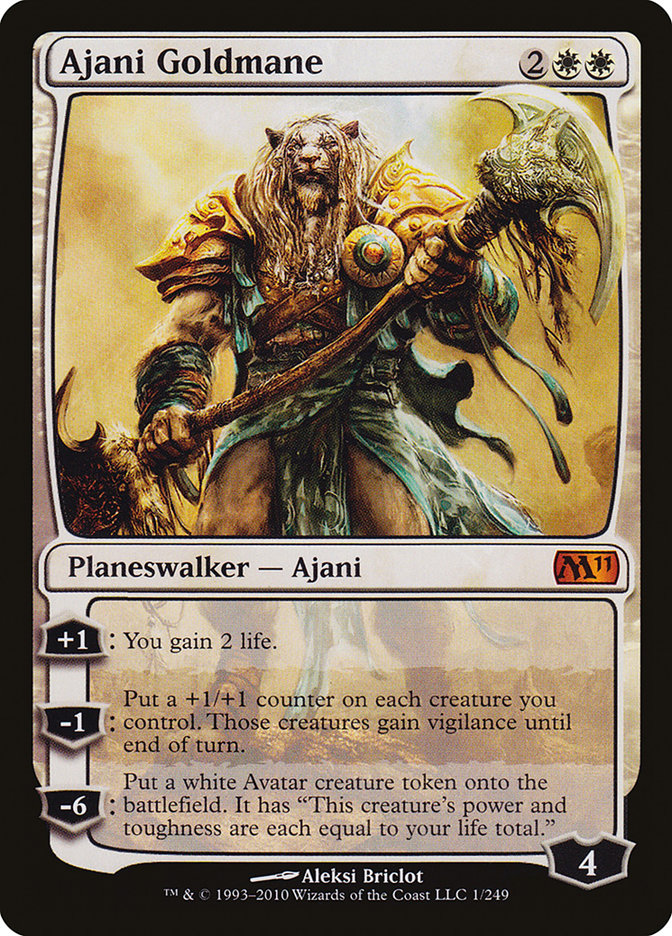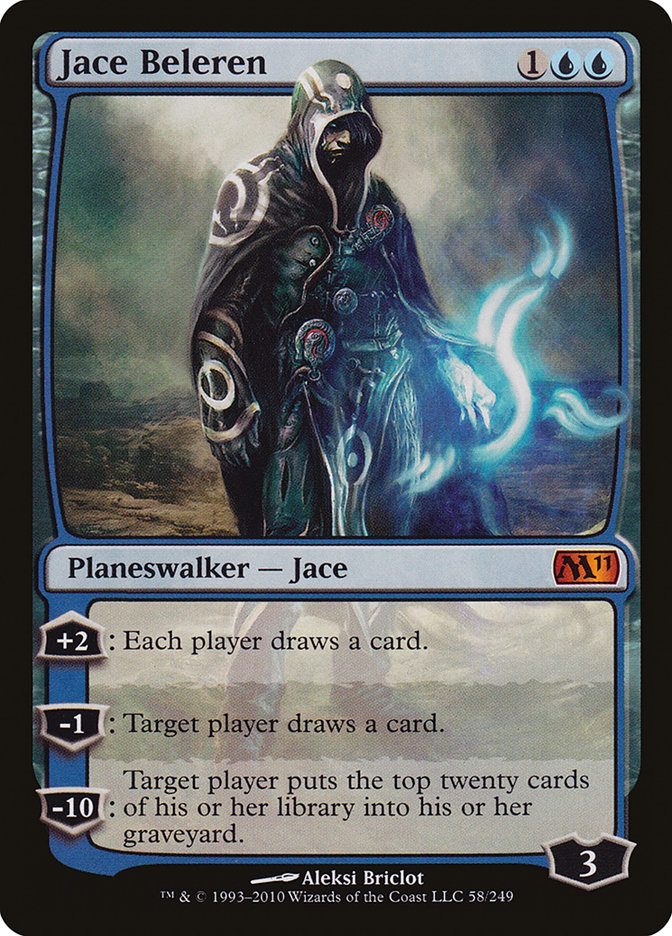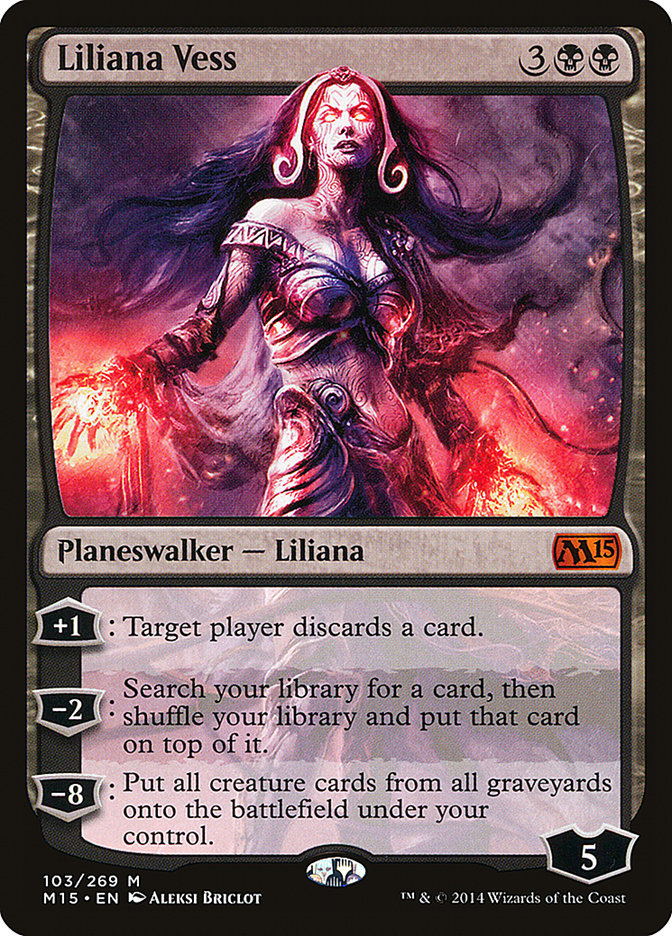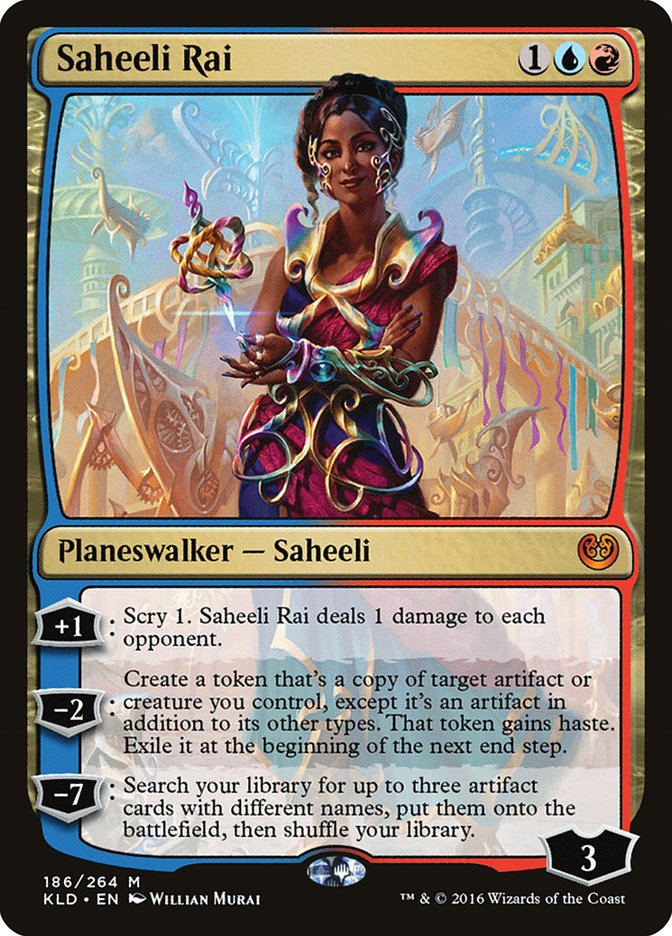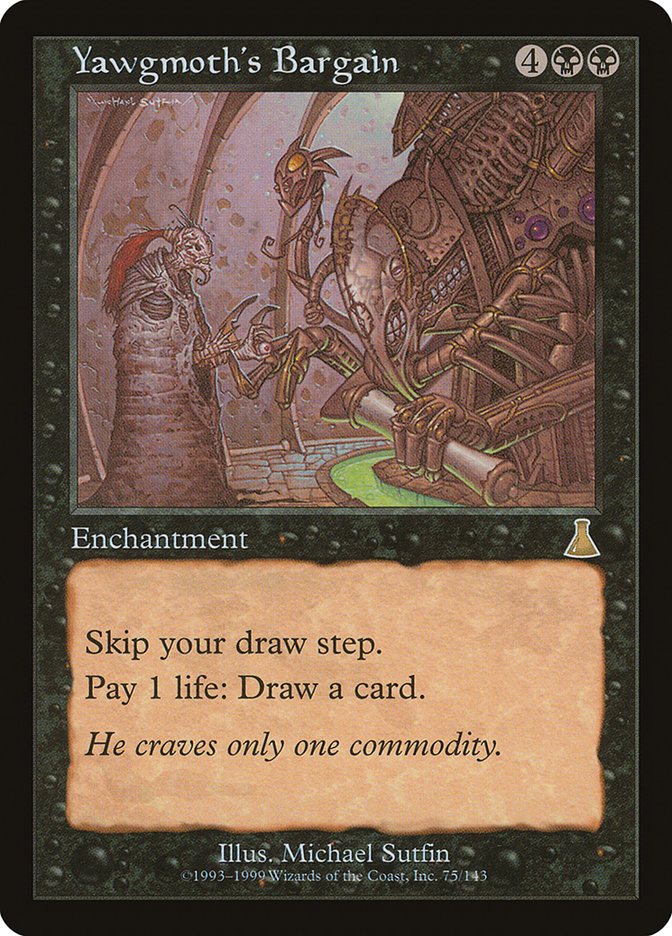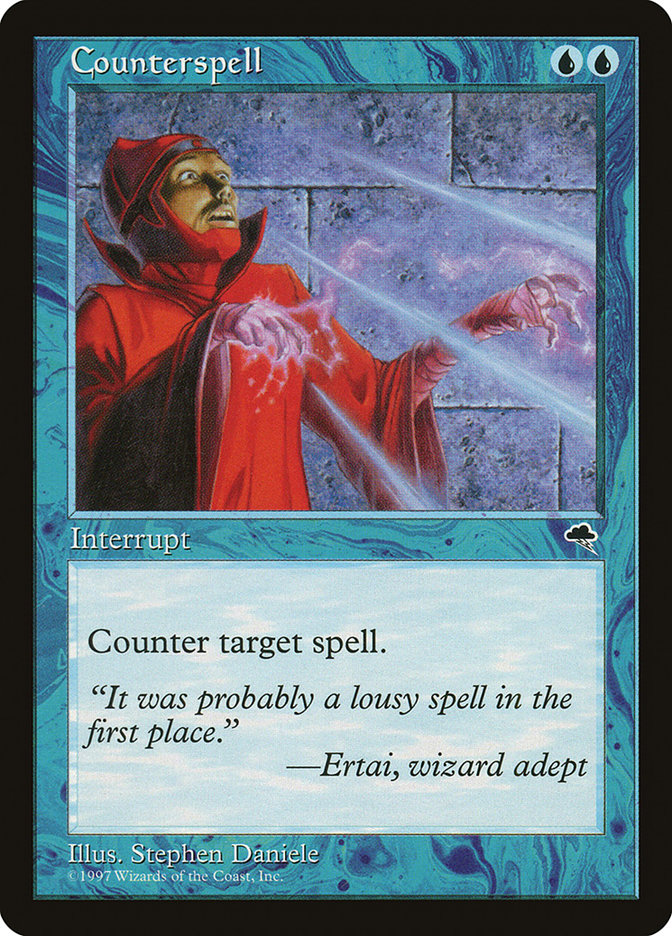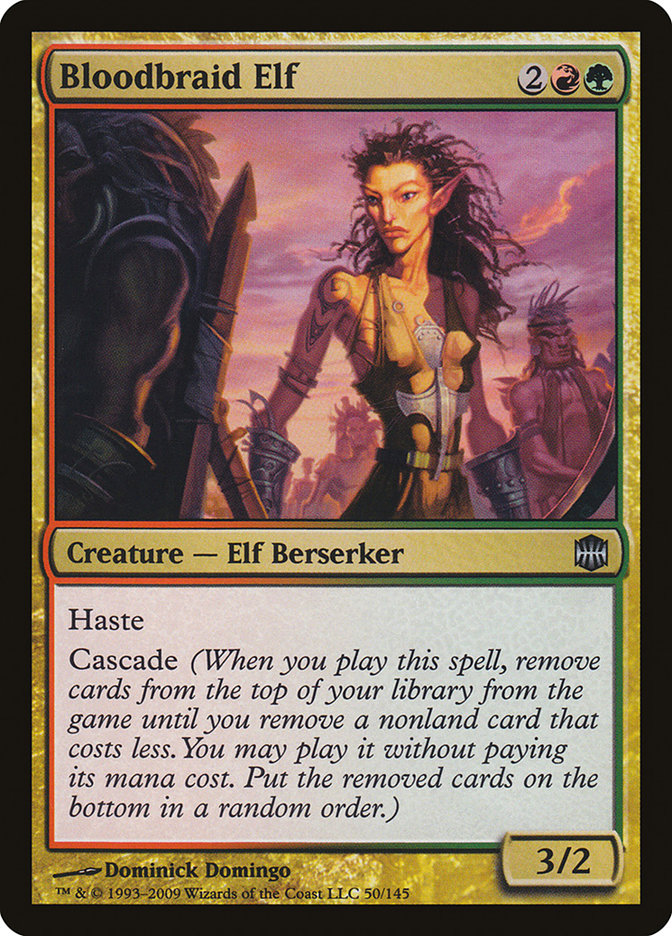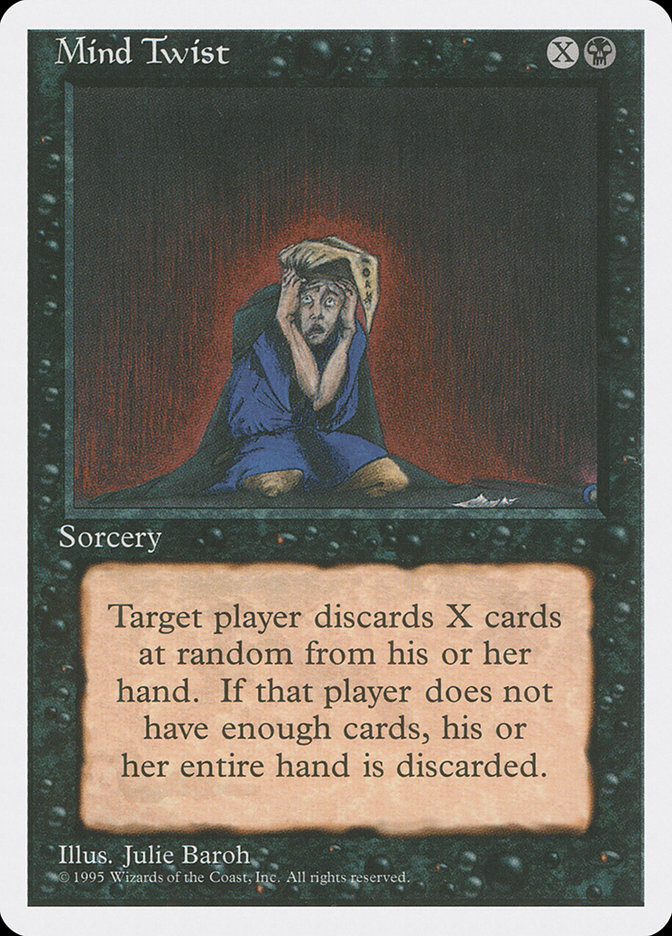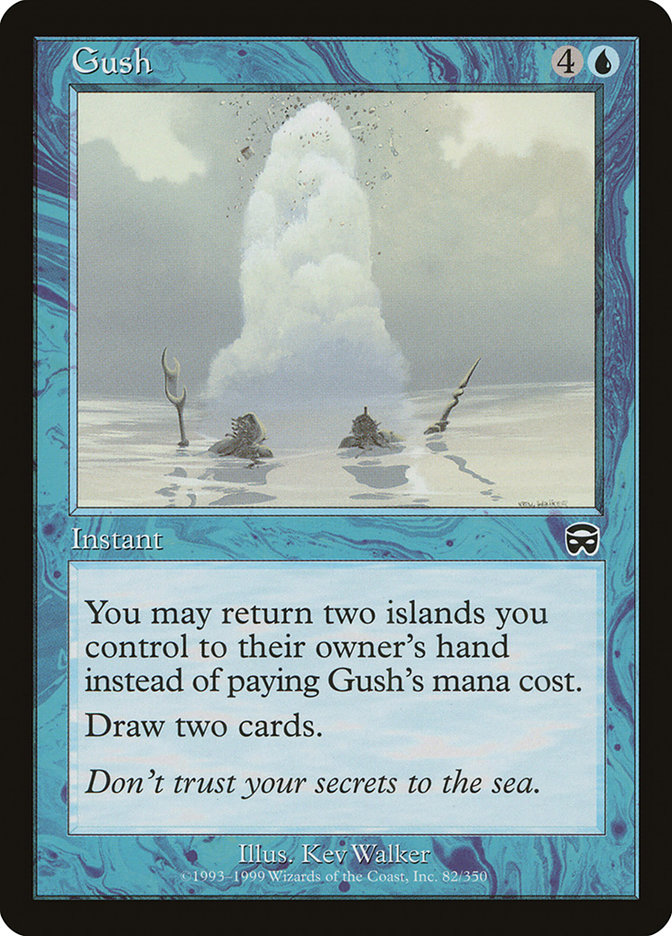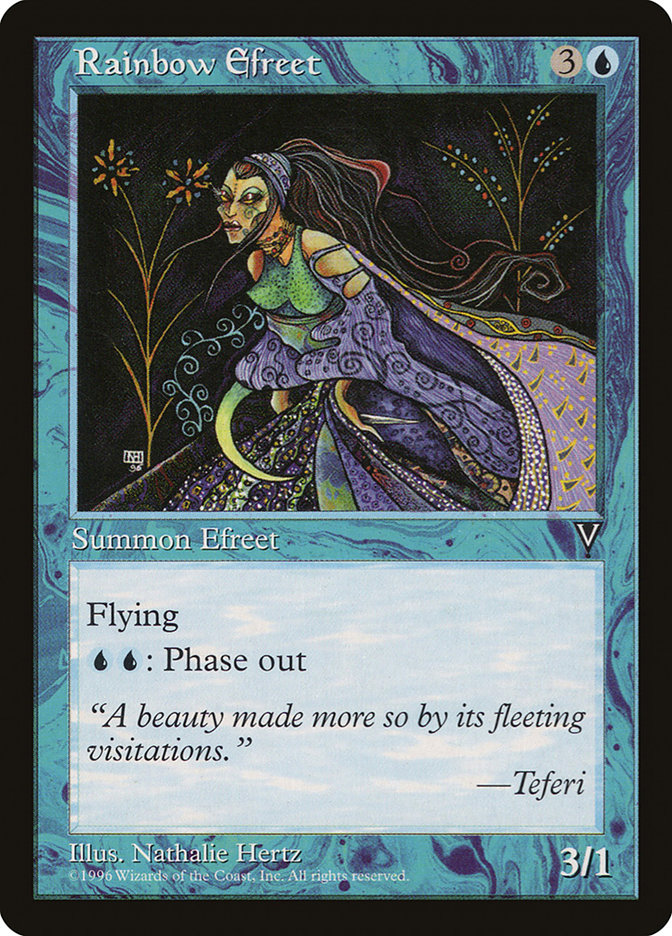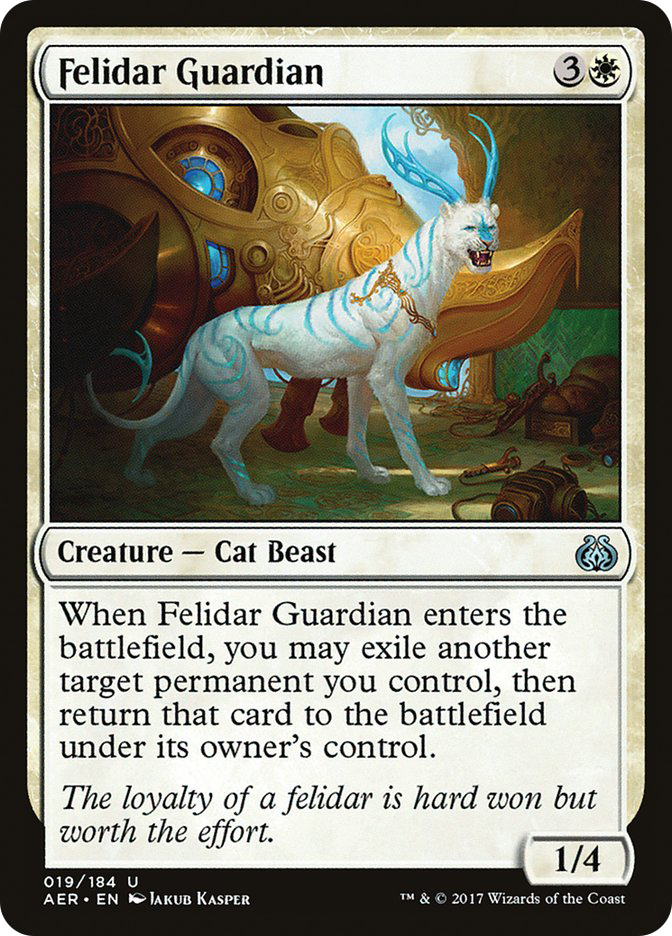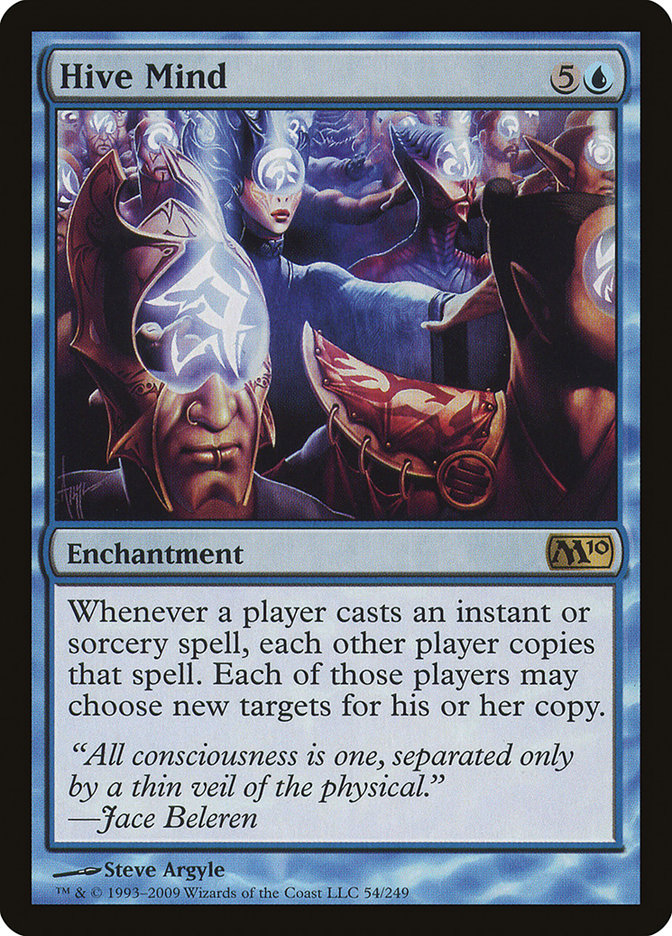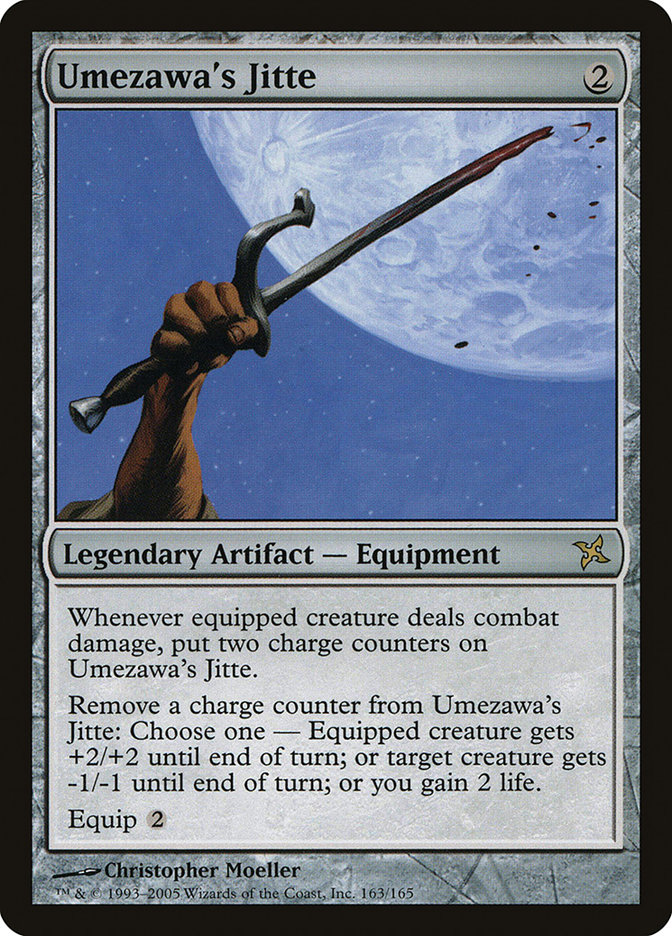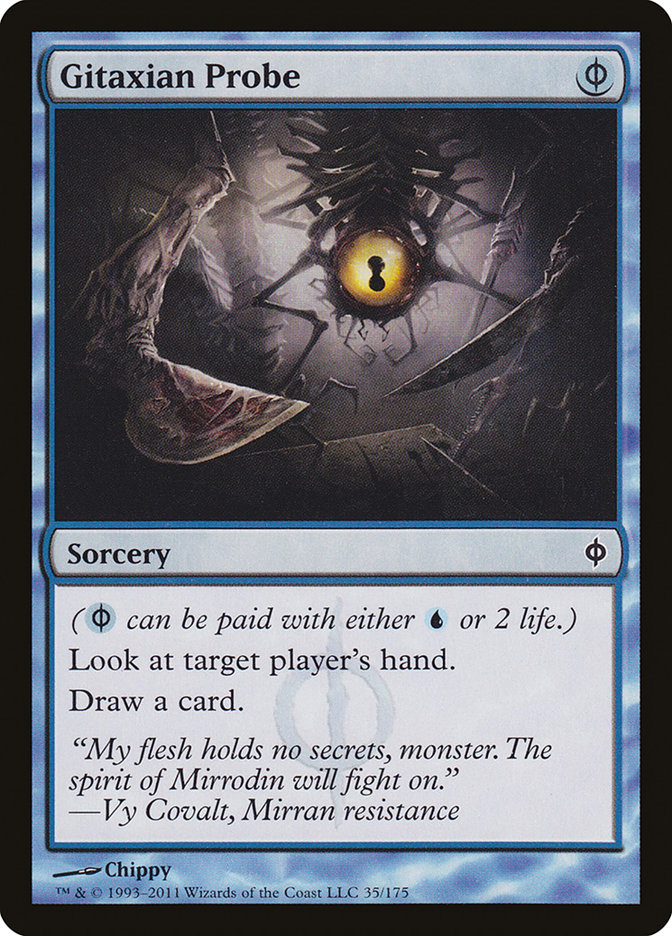It’s no secret that Standard has been in rough shape recently. Mardu variants and the Saheeli Rai / Felidar Guardian combo have had a stranglehold on the format for weeks now, and it’s going to stay that way until Amonkhet is released next month.
Even more problematic, this stale format is coming on the heels of the first bannings in Standard since Jace, the Mind Sculptor and Stoneforge Mystic and a previous year largely dominated by Collected Company decks. It’s been quite a while since we’ve had a healthy, dynamic, diverse Standard format that seemed to be the norm for several years.
This series of lamentable Standard metagames has understandably spurred a litany of discussion about what the core issues with these formats have been and what the appropriate solutions are. Brad Nelson and Todd Anderson recently offered their thoughts on the current format and potential bans here and here, respectively, and Brian DeMars wrote an article detailing his own opinions on how to return Standard to its glory days.
These articles focus primarily on the current format, but recently I encountered a piece by SaffronOlive, framing the current issues Standard faces within the context of a design issue, particularly one of overpowered planeswalkers that are designed in large part to serve as attractive selling points for the set.
There’s no denying that the introduction of planeswalkers fundamentally changed Magic. From how the game is played to how it’s marketed to how players engage with the storyline behind the cards, it has all transformed over the last decade. It’s also clear that planeswalker cards often serve as the face of a set and are meant for competitive play. Having the cards that most resonate from a flavor perspective also see frequent play in tournaments helps carry that resonance across multiple communities of players, uniting kitchen table and Pro Tour players alike.
SaffronOlive readily accepts that using planeswalkers as a marketing tool has benefited Magic and as such will continue in the future. The crux of his piece is that those pushed planeswalkers are the central issue with Standard from a gameplay perspective.
On the contrary, I believe that the introduction of planeswalkers, even those that are clearly pushed in power level, is perhaps the single best innovation in Magic’s history and has turned Magic into a much better game than it was previously. I say this as someone who has played competitive Magic across both eras and still retains a large amount of nostalgia for Standard formats past.
Standard does indeed have issues, but in my opinion the mistakes are isolated instances that have come more often in the last eighteen months than in previous years, mistakes that inadvertently squeezed the metagame between two decks that cannot be combated at the same time. Those mistakes are Reflector Mage / Collected Company; Emrakul, the Promised End; and Felidar Guardian. Notably, there are no planeswalkers on that list.
That’s a lot to unpack, so let’s get started, shall we?
Enter the Battlefield
For many years, Magic was a game dominated by powerful spells. The answers printed were so much better than the threats that control decks were at a huge advantage, barring the printing of broken combo enablers. By current standards, these were unbalanced formats, but no one knew any better and Magic is such a great game that it was able to survive and thrive despite the imbalance in design.
We can see a relic of this era in the continued association within the Magic community between control decks and “better” players. By contrast, aggro decks have come to be associated with weaker, less experienced players. The association is certainly not as strong as it once was, but it’s still around and it’s a direct result of this early era where better players did in fact gravitate toward control decks.
But they didn’t do so because control decks are more complicated or skill-intensive than aggro decks; they did it because those decks had the best cards. And unsurprisingly, as the balance of power has shifted to more aggressive decks, we’ve seen the top players play more aggressive decks.
This shift toward more powerful threats and away from answers is a direct result of the introduction of planeswalkers and has been a great positive for Magic as a game. As threats, planeswalkers snowball quickly out of control, either by accruing card advantage or threatening a game-ending ultimate ability, and as such, they demand an immediate answer.
Direct answers to planeswalkers are few and far between, meaning that creatures are the best answers to opposing planeswalkers. An attack step is very little to trade for such a powerful card, and by using creatures to answer to your opponent’s cards, you wind up avoiding the pitfalls of the threat-answer paradigm. You never end up in a situation where you’ve drawn the wrong answer for your opponent’s planeswalker because all creatures (without defender) attack.
The need to answer planeswalkers and answer them with creatures necessitated an increase in the relative power level of creatures available in Standard. Cards like Watchwolf that were exciting in their time are now quite pedestrian. While it once was a format-defining staple, Wild Mongrel was given reach recently as Noose Constrictor and yet sees very little play.
Creatures are more powerful than they used to be and answers are less powerful. We all know this. But contrary to the opinions of many, I think that shift has been great for Magic.
In the spell-dominant era, games of Magic were often played away from the battlefield. Card advantage was supreme as players spent the early turns making land drops and waiting for their opponent to blink first so they could win a key counter war or answer their opponent’s threat for value. The game was mostly about accruing small edges in material until they snowballed into an insurmountable advantage.
Many players find these games interesting and they certainly have their place in competitive Magic, but they should not be the dominant paradigm for the game. They are incredibly difficult to follow, especially when tracking the cards in each player’s hand is a challenge for coverage right now. They also largely ignore one of the fundamental resources in Magic: tempo.
Since the introduction of planeswalkers and the necessary increase in the power level of creatures, tempo has taken a prominent role in games of Magic. The game is now played largely on the battlefield, where establishing an advantageous position and leveraging that position to either kill your opponent or force them into poor trades of resources are critical.
These games benefit both players and viewers. For the latter, the primary action of the game unfolds in front of them, on the battlefield, making the games easier to follow and more immersive. For the former, the game has more strategic and tactical depth than it had before.
The increase in the power level of threats has of course made reactive decks worse, but they haven’t been completely relegated to the 0-2 bracket. U/W Control during the Shards of Alara block era,
But instead of these decks being the obvious best choice, they are now one of many that include small aggro, big aggro, pure midrange, ramp, and sometimes combo decks. We’ve seen this diversity in Standard up until recently, and planeswalkers forcing a shift toward more powerful threats is a huge reason why.
All About the Midrange
SaffronOlive briefly discusses the push toward the middle of the curve (converted mana cost about three to five) that has been brought about by planeswalkers, forcing Standard to devolve into a sea of midrange mirrors. While I agree that most decks focus on that part of the curve, I don’t see it as a problem or as a result of the introduction of planeswalkers.
Rather, focusing on that part of the curve serves to maximize versatility, which creates a strategic advantage. Any deck that is focused on a single gameplan, that is a linear deck, is going to be easier to exploit. As our collective understanding of Magic has improved, we’ve seen a greater emphasis put on decks that aren’t so exploitable and can win in several different ways. Decks that can successfully incorporate multiple plans are much more difficult to plan against, as we’ve seen recently with Four-Color Saheeli and the development of transitional sideboards in Mardu.
Unfortunately, it seems a large part of the community is inclined to categorize any such decks as midrange, thus making the definition of control and aggro as narrow as possible. Such a paradigm creates several issues. First, it conflates a huge swath of decks under one umbrella, making it difficult to differentiate between them.
For example, consider the many variants of Abzan during the Khans of Tarkir era of Standard:
Creatures (21)
- 4 Fleecemane Lion
- 4 Anafenza, the Foremost
- 2 Wingmate Roc
- 4 Rakshasa Deathdealer
- 4 Siege Rhino
- 2 Warden of the First Tree
- 1 Surrak, the Hunt Caller
Planeswalkers (2)
Lands (25)
Spells (12)

Creatures (14)
Planeswalkers (4)
Lands (26)
Spells (16)

Creatures (10)
Planeswalkers (3)
Lands (26)
Spells (21)

The most aggressive version played a low curve and high creature count with Rakshasa Deathdealer and Warden of the First Tree. The classic midrange versions generally played Fleecemane Lion as their only two-drop and started to incorporate Courser of Kruphix as an advantage-generating threat. Then there were the most controlling lists that either sideboarded Fleecemane Lion or eschewed it completely and played more removal and sweepers.
With a narrow definition of aggro and control, all of these decks end up being classified as midrange. After all, they are all capable of punishing opponents who stumble to end a game early as well as dominate on turn 10 or later. But on a strategic level, these are all different decks that need to be attacked in different ways. Using one moniker for them all removes any nuance from our understanding of archetypes. I often take umbrage with how decks are named on StarCityGames.com, but I’m glad to see that those lists were labeled appropriately.
So the move toward the middle part of the curve isn’t indicative of a midrange takeover; it’s indicative of the Magic community evolving in its understanding of what makes a good deck. Consequently, we have to update our understanding of what an aggro or control deck is to include more than just the most extreme linear examples of the archetype.
As an aside, I see reliance on stark contrast between archetypes as yet another relic of the bygone era of spell-dominant Magic. Decks like Buehler Blue, Psychatog, and Mirari‘s Wake are all heavy on counterspells, card advantage, and removal and very light on win conditions. They are as controlling as control decks can possibly get.
The pinnacle of interaction.
And the few aggressive decks that could compete with them had to be very low-curve to get under their counter wall. These progenitors set the bar by which all later decks are judged, but they are products of a wildly imbalanced metagame and thus should not be taken as the standard.
Yes, there are many people who pine for the days of Psychatog and friends. But the financial success of Magic and the growth of tournaments over the last decade are strong evidence that such a desire is motivated more by nostalgia than Magic being more enjoyable on the whole back then.
Rather than Standard formats being defined by extremes, we now have decks that are versatile and customizable. These decks create more interesting deckbuilding decisions because you’re not pigeonholed into playing all small creatures or all the best answers, instead trying to find the best blend of the two. They also create more dynamic metagames because you don’t devolve into equilibrium as quickly. Each week you can change a few cards or bring a new sideboard plan to keep your opponents off-balance, and they respond the next week in turn.
With few exceptions, Standard formats from the introduction of planeswalkers to Oath of the Gatewatch have been characterized by these dynamics, much to Magic’s benefit.
The Mistakes
So what has happened since Oath of the Gatewatch to create the stale and/or broken formats we’ve seen recently?
The notion of a systemic design issue is attractive because it naturally lends itself to potential solutions, but alas, I don’t see that argument holding up after close scrutiny. After all, bans in Standard are exceedingly rare, happening for only the second time in the planeswalker era this winter. Also, we’ve seen more healthy, popular Standard formats in that time than the opposite, suggesting that the issue is not innate to how the cards are designed.
Rather than design issues, I think we’ve been victims of an unlikely glut of individual mistakes in development that have occurred over the last fourteen months. As I noted earlier, I’ve identified three such mistakes: Reflector Mage / Collected Company; Emrakul, the Promised End; and Felidar Guardian. Importantly, each of these mistakes created a squeeze on the metagame that prevented counterplay, and I’ll be careful to show where that squeeze was as I go through them individually.
I list Reflector Mage and Collected Company together because their dominance came as a pair, with neither experiencing sustained success without the other. Collected Company was in Standard for months and written off by many (including yours truly) as a bust before finding success in the Rally the Ancestors deck. That deck was arguably the best in Standard that fall, although it didn’t catch on until near the end of the season, so there’s no telling if it could’ve risen to dominant levels.
What is known is that Rally the Ancestors was dominant once it gained Reflector Mage, offering the deck a powerful piece of interaction to find off Collected Company as either a way to buy time to set up its combo or simply turn the corner and go on the attack against an opponent who plays too cautiously in expectation of said combo.
After a brief reprieve while G/W Tokens dominated, this pair was back at the top tables over the summer, this time in a more normalized shell of powerful creatures. The only choice was whether or not you wanted to play Thalia’s Lieutenant.
It’s easy to label Collected Company as the broken card of the two since it’s certainly the more powerful one, but it’s powerful in a way that is typically hard to be broken: it’s powerful given a critical mass of two- and three-mana creatures to find with it. Most lists wanted to be in the 26-to-30-creature range to ensure you hit two creatures reliably, which, after four copies of Collected Company, leaves precious few slots for interactive cards.
Reflector Mage represented an excellent way to add another powerful piece of interaction into Collected Company decks that they could access reliably through the power of their namesake card. This allowed them to seamlessly cover their biggest weakness, a lack of interaction, and do so with a card that was effective against more aggressive and more controlling decks.
Reflector Mage stopped more aggressive decks from effectively getting under Company decks, although they were already well-situated for those kinds of matchups with a slightly bigger, more powerful curve. The real benefit was against bigger decks. Single, large creatures are a natural answer to a deck that wants to stop its curve at three and flood the battlefield, especially if they are light on removal, but those creatures are a huge liability effects. Reflector Mage singlehandedly killed all the Company decks’ natural predators.
Second, we have Emrakul, the Promised End. Toward the end of the summer, Temur Emerge decks contended with Bant Company, a precursor of what was to come last fall as Reflector Mage once again looked poised to dominate the metagame in W/U Flash before Emrakul took over, first in B/G Delirium and finally in R/G Aetherworks.
Emrakul, the Promised End represents an incredibly powerful, game-ending threat. It’s the kind of card you can build to if you want to pack your deck with removal and defensive creatures. The primary liability of these kinds of cards is against aggressive decks, where they often rot in your hand early and perhaps aren’t enough to stabilize if you fall too far behind.
In B/G Delirium, the card was rarely in your hand because Traverse the Ulvenwald meant you only had to play a singleton copy to have access to it in the late-game. In R/G Aetherworks, the times it sat in your hand were outshone by the times it came down on turn 4.
As for the second part of that liability, Emrakul, the Promised End could catch you up from all but the most hopeless positions. Taking your opponent’s turn is such a powerful effect that at the end they were often left with nothing, and the 13/13 flying body would make sure the game ended before they could recover.
That level of power in the late-game gave Emrakul decks near-complete inevitability. As a result, the rest of the format was squeezed into trying to win the early-game and Emrakul decks could simply capitalize on that predictability and build their decks with the early-game in mind, confident that their trump card would dominate any big threat their opponent could muster.
And last, we have Felidar Guardian. For the record, I have no insight into the inner workings of WotC R&D, so I don’t know definitively, but I would be absolutely shocked if they printed this card with any awareness of its interaction with Saheeli Rai. Two-card combos without some great restriction are always going to be dangerous because you have so many options for what to put around them. In this case, the best shell turned out to be a four-color creature deck that can be aggressive or controlling, all the while threatening to end the game on the spot. While I earlier argued that making decks more versatile was good for Magic, there is such a thing as too much of good thing and that indeed was the case here.
In particular, fighting Four-Color Saheeli without significantly weakening your Mardu matchup (and vice versa) is too difficult because of the squeeze these two decks put on the removal of the format. To beat Felidar Guardian, you need instant-speed removal spells, but all of the available options match up poorly against Scrapheap Scrounger and Gideon, Ally of Zendikar. On the other hand, Incendiary Flow and Ruinous Path would be good options to have against Mardu but are blank against the combo.
I think either of these decks would be containable alone, but as a duo they squeeze out the rest of the metagame. You could say that Mardu is the offender here and argue for one or more of its cards as a mistake, but given that I think the Saheeli Rai / Felidar Guardian combo was never meant to exist, I have to conclude that the rest of the format is designed in part with Mardu decks in mind, so it’s the safer one to let exist.
These cards are oppressive in very specific ways, and, importantly, in ways that the various planeswalkers that have been printed recently (Chandra, Torch of Defiance; Nissa, Voice of Zendikar; Liliana, the Last Hope; etc.) are not. Nor has the presence of these planeswalkers contributed to the issues that these cards cause. Yes, Liliana, the Last Hope was in B/G Delirium; and Chandra, Torch of Defiance was in R/G Aetherworks and is now in Four-Color Saheeli; but they are support cards. Dampening their power would affect these decks but not by enough to solve their inherent issues.
The Question of Gideon
There is one potential exception, which I contemplated adding to the list of mistakes: Gideon, Ally of Zendikar. Outside of the metagames dominated by Collected Company, Gideon has been omnipresent in Standard since its printing and it’s easy to see why. It’s a versatile threat that demands an immediate answer at any stage of the game. Preceding Gideon by any reasonble curve of threats (Sylvan Advocate plus Nissa, Voice of Zendikar; Thraben Inspector plus Heart of Kiran; etc.) will often put your opponent in a position where they are only capable of answering the Gideon or the early threats, but not both.
But with the shift in Magic toward tempo and battlefield presence, the importance and power of curving out is important to all decks. Does the fact that curving into Gideon is especially powerful represent something broken?
For me, Gideon is more like Siege Rhino than the other cards. Like Gideon, Dr. Siegeman was omnipresent for its entire time in Standard and fit into many different types of decks because it was simply that powerful of a card. Many players decried its existence and called for a ban, but it was always just on the right side of the line to stay. There are always going to be best cards that are perennial staples; the game would be boring without them. And it’s natural to be sick of seeing a card after over a year of it being at the top tables. The move to twice-a-year rotations was supposed to alleviate this phenomenon to an extent, but that change had other issues that WotC deemed untenable, so having the best cards draw more ire from the masses is the price they paid.
Yes, curving into Gideon, Ally of Zendikar is very powerful, but it’s not broken. You can defend against Gideon in many ways, just like any planeswalker. Unfortunately, Gideon has existed in several broken formats that restricted some of these angles of attack, thus exaggerating its power level.
Like Siege Rhino, you could argue that Gideon, Ally of Zendikar was pushed a little too far, but there’s a fine line between that and broken. And we need to tolerate mistakes of this kind in order to allow WotC to do their job effectively. Magic is an immensely complicated game, and designing cards that excite players while creating balanced playing environments is very difficult.
Futures
That said, WotC has clearly erred several times in recent years, and the criticism they’ve received as a result is well-earned. How do we correct a problem of isolated mistakes? It’s not helpful to simply say the Magic design and development teams should do a better job, but there is one area where I think they could stand to benefit: man-hours.
As I’ve noted, Magic has grown rapidly in popularity over the last five to ten years. That has generated two effects that I see as contributing to the rise of individual mistakes.
One, there are a lot more games of Magic played than ever before. Formats are iterated more quickly than ever before, and that means we find any mistake cards/combos like Emrakul, the Promised End and Felidar Guardian, not to mention powerful staples like Siege Rhino and Gideon, Ally of Zendikar, more quickly than before. The shells around these decks evolve more swiftly, thus pushing the fringe archetypes that give Standard its diversity out of the format earlier.
This issue doesn’t so much as create more potential for mistakes as much as it punishes the ones that are made. It raises the stakes, so to speak. We have about three months of each set before the shakeup of the next one, and if it takes two of those months to find and tune dominant decks then it’s not much of an issue; the next set is about to drop and a few weeks of staleness while everyone gets excited by spoilers is easy to tolerate. But if it happens in one month, then you have a lot of unhappy customers growing weary of seeing the same decks at their FNM week after week.
The increase in the player base has also generated demand for more and more standalone products. Things like Modern Masters, Conspiracy, Commander, and Duel Decks all require tons of effort to produce and spread the design and development departments thinner. Even if they are increasing their staff in proportion to the increase in work, managing that many moving parts is more difficult, and more mistakes are to be expected.
Note that two of the mistakes I’ve identified, Reflector Mage and Felidar Guardian, easily could have slipped through the cracks as cards designed for Limited and not expected to show up often in Constructed.
Of course, hiring more people and discontinuing profitable secondary products are also rather poor solutions, but identifying the issue as a disparity in the man-hours WotC can put into a set versus what the community at large can points to solutions of increased efficiency.
Where do the mistakes typically happen? Looking at Magic’s history, I can identify four broad categories that WotC needs to be more mindful of to avoid repeating these and other mistakes.
Pushed Face Cards
This is one area of agreement between SaffronOlive and me. We both acknowledge that the cards designed to sell the set are often pushed in power level so they show up in competitive decks. While this category can include planeswalkers (see Jace, the Mind Sculptor), it doesn’t contain them more often than any other card. For example, Emrakul, the Promised End is in this category.
These cards are particularly dangerous when they represent a new card type, which are obviously more difficult to evaluate. Smuggler’s Copter and Heart of Kiran can fit into this mold, although I think they fall just short of being mistakes, a la Gideon, Ally of Zendikar. We saw Equipment have this issue when they were first introduced with the printing of Skullclamp and Umezawa’s Jitte.
Theoretically, these cards should be the most tested, since they are designed for tournament play, which is why I find Emrakul, the Promised End to be the most egregious mistake of the ones listed. Nevertheless, these are cards to look out for in the future.
Narrowly Powerful Effects
This category includes cards like Collected Company and Stoneforge Mystic. Both are cards that need other pieces around them to function at all, yet are incredible once those pieces exist. Having cards that live in the extremes are dangerous because you’d prefer not to have cool rares go completely unplayed, which makes them more likely to fall in the latter camp.
Such cards also create significant restrictions on design in the future. Collected Company limits how far you can push three-mana creatures and Stoneforge Mystic does the same for Equipment. Therefore, you need to keep an eye on those types of cards for the entire time they could be an issue.
Since design teams are unique to each set (with frequent overlap, of course), keeping these kinds of cards in check requires effective interpersonal communication, which, if I’m to understand from the laments coming from social media, is difficult. But it’s also necessary because these kinds of cards provide interesting build-arounds and often serve as harbingers of what’s to come in the following block.
Combos
Combo decks don’t happen very often in Standard, and for good reason. They are naturally oppressive by limiting the viable forms of interaction for decks that can’t race them. They are also often hard to spot, coming from innocuous cards like Felidar Guardian and Splinter Twin that would otherwise go unplayed.
If they don’t have one already, perhaps development teams could assign one person to combo-watch, although that position sounds very difficult for all but a few, incredibly talented players. Outside of that, I’m afraid this category doesn’t have an easy solution.
Cost Reduction Effects
This is the “affinity” category, although things like storm, cascade, delve, and Phyrexian mana have also posed issues, just mainly outside of Standard. The mana system really is the most fundamental part of Magic, putting a cap on how quickly you can develop, and toying with that system is dangerous.
In general, the potential for free spells is the warning sign, as mechanics like convoke and improvise that require some other investment have worked well.
Honestly, given how prevalent this issue is, I wouldn’t mind seeing a moratorium on free spells via cost reduction. At least, when you put Memnite in your deck, you have to draw it sometimes on turn 5 and openly weep. And if improvise is any indication, it seems as though we are moving in that direction.
Silver Linings
Importantly, none of these solutions requires wholesale changes to the design and development process, nor do I believe such drastic changes are necessary. In general, WotC does a great job designing Magic sets and the mistakes are far outweighed by the successes.
The recent mistakes in Standard are new in that they’ve been regularly spaced, which has made the problem seem more pervasive than it truly is. Every time we seem to be out of the woods, a new problem emerges. But as Magic players, we should be familiar with variance when we see it. Yes, there are problems right now with Standard, but they are not systemic, and they certainly aren’t because of planeswalkers.
This article is getting a little long, but before I go, I just wanted to make clear that, as much as I disagree with it, I very much appreciated SaffronOlive’s take on the recent issues with Standard. He does great work and this article should in no way be construed as an attack on him or his article. Disagreement in any forum is important; though great minds may think alike, fools seldom differ.


